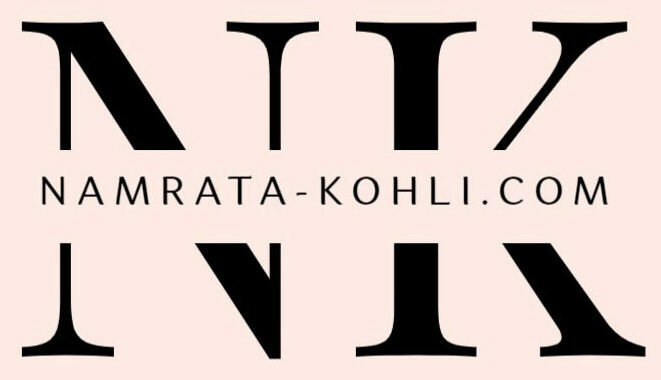In an age when your phone tells the time with atomic precision, why do people still invest lakhs — even crores — in luxury watches?
A luxury watch is not about time. It is about whether your time has come, says industry insider Rakesh Mohunta, luxury consultant to one of the premium watch brands.
Today’s luxury watch is less about utility and more about identity. It’s an heirloom, a conversation starter, a subtle flex of wealth and taste — all wrapped around your wrist. And in India, this market is ticking faster than ever.
The luxury-only segment (high-end Swiss and luxury watches) was estimated at $1.6 billion in 2024, with forecasts pointing to $2.8 billion by 2033 — a CAGR of about 5.7 per cent, as per research by IMARC group. Driving this surge are first-gen entrepreneurs, young collectors, and celebrities — all groups to whom fewer but finer possessions matter.
For instance, Indian cricketer Dinesh Kartik recently purchased a Favre Leuba “Ice Blue” Chief Chronograph – a Swiss watch with fine chronograph movement, smooth cushion shaped dial and silicon rubber strap – worth over Rs 4 lakh. Karthik’s purchase highlights his appreciation for unique, quality Swiss timepieces with character.
“The Indian buyer today is evolved,” says Raghav Narula, a Delhi-based luxury watch consultant. “They’re not just after brand names — they’re chasing in-house movements, limited editions, even auction pieces.”
Aparna Ravi, marketing head at Titan, believes luxury watches have evolved beyond timekeeping to become symbols of style, craftsmanship, and storytelling.
“For women, collections like Raga Cocktail (Rs 40,000–Rs 50,000) are conceived as jewelry-first pieces, meant to complete or elevate an ensemble,” she explains. “For men, it’s a passion for horology — automatic, mechanical, and multifunction watches such as chronographs, dive watches, and barometers dominate the luxury segment.”
High-end watchmaking, she adds, is a painstaking process—design and movement development can take anywhere from 8 to 24 months. Titan’s Meteorite watch (Rs 1.2 lakh), with a dial crafted from a 120,000-year-old meteorite, exemplifies this narrative-driven design. Its 300 limited-edition pieces sold out within weeks, thanks to its cosmic story and exclusivity.
But the real top end of the game is still dominated by the likes of Rolex, Patek Philippe, relative newcomer Jacob & Co, and Panerai, among others. Recently, Jacob & Co. created limited-edition watches featuring Indian heritage motifs. The Epic X Ram Janmabhoomi Edition 1 is a 44 mm stainless steel model featuring the newly built Ram Mandir in Ayodhya, along with silhouettes of Lord Ram and Hanuman, and the inscription ‘Jai Shri Ram’. Limited to 49 pieces, each priced at Rs 34 lakh, the line has already seen 35 of them sold. Additionally, the New York-base watchmaker has honored other iconic spiritual architecture — like the Golden Temple — through special designs in their broader Epic X India editions.
What makes a watch truly luxe?
Tip: It’s not just gold or diamonds. “Material innovation is redefining luxury watches,” says Titan’s Ravi. “It’s no longer just about gold or precious metals — combinations like grade-5 titanium are trending for their superior strength and scratch resistance.”
Equally important is what’s inside the watch — high horology. True luxury is in the movement (in-house calibres), heritage (brands with a backstory), complications (moonphase, perpetual calendar), and craftsmanship (hand-finished dials, tourbillons).
A Patek Philippe isn’t just a watch: as the company’s own slogan goes ‘You never actually own one. You merely look after it for the next generation’. And that’s the tone luxury houses are setting. From Jaeger-LeCoultre’s celestial designs to Audemars Piguet’s architectural marvels, these are pieces of wearable art — with price tags to match.
How much is too much for a watch?
If you’re buying your first luxury watch, experts recommend starting with Rolex or Omega — timeless, relatively accessible, and with resale value.
But if you want something to be a family heirloom, go for Patek Philippe, Vacheron Constantin, or Lange & Söhne, or even a Louis Moinet.
If it’s love at first wrist, follow passion — not price. “The heart should lead the hand,” says Aishwarya Seth, a 32-year-old collector who bought her first Jaeger-LeCoultre after years of saving. “It wasn’t cheap, but it made time feel personal.”
India’s luxury watch buyer is no longer passive. They’re younger (in the 25–40 cohort), digitally savvy, and increasingly buying pre-owned or auctioned pieces through platforms like Ethos Summit, Second Movement, and Sotheby’s.
Meanwhile, brands are opening boutique experiences: Rolex and Patek Philippe now have exclusive lounges in Mumbai and Delhi. Some, like Cartier, are offering personalisation — initials on the rotor, bespoke straps, even private viewing sessions.
Luxury watches are not just about seconds — they’re about stories. They tell who you are, and sometimes, who you aspire to be. And in an age of fleeting fads, there’s something enduringly powerful about a well-crafted, meticulously wound, mechanical object that — quite literally — keeps time.
| Brand | Model | Price Range (Rs) | Highlights |
|---|---|---|---|
| Rolex | Oyster Perpetual, Submariner | 6.5L – 25L+ | Iconic, robust, status symbol |
| Patek Philippe | Calatrava, Nautilus | 35L – 2.5 crore+ | Collectible, high resale value |
| Audemars Piguet | Royal Oak | 35L – 1 crore+ | Edgy, recognisable, celebrity-favoured |
| Omega | Speedmaster Moonwatch | 6L – 12L | Legacy, sporty elegance |
| Jaeger-LeCoultre | Reverso | 10L – 60L | Art Deco style, dual-face innovation |
| Cartier | Santos, Tank | 5L – 25L+ | Jewellery meets horology |
| Hublot | Big Bang | 12L – 50L+ | Bold, modern, skeletonised dials |
| Breguet | Classique Tourbillon | 30L – 1.5 crore+ | Haute horology, historical prestige |




